Arrabawn Co-op held two farm walks recently, one in Ballingarry in north Tipperary and the other 20km away near Birr in Co. Offaly.
There are plenty of similarities between the farms; both are large farms of 80 and 90 hectares each of right good land, both are father and son partnerships and both are milking black and white cows with a beef enterprise.
The Kennedys
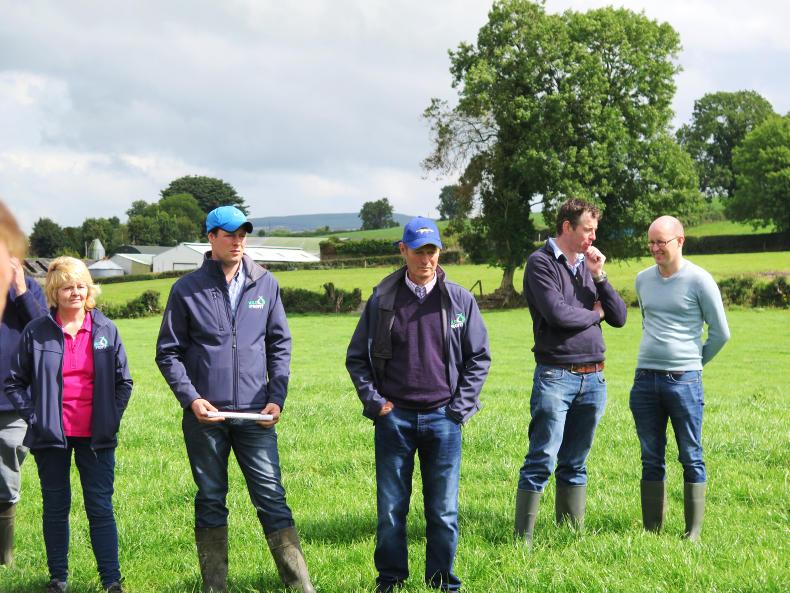
Differences emerge in terms of stage of development. Pat and Eddie Kennedy in Tipperary are milking 162 cows this year on their 57ha milking block.
Thirty four hectares of outside land carries the 51 replacement heifers and calves and around 50 beef animals.
Cow numbers have increased from 112 cows in 2012 to 143 cows in 2016 and 162 cows today. Current stocking rate is 2.84 cows/ha on the milking block.
Next year, the Kennedys plan to increase cow numbers by 10 and milk 170 cows which would bring the stocking rate to 2.98cows/ha.
Growing enough grass
The issue for the Kennedys is to grow enough grass to feed the herd. Last year, it was estimated that 13.6t/ha of grass was grown.
Increasing the stocking rate to 3cows/ha means that the farm should be growing 15t/ha to have enough grass and silage for the cows with 500kg of meal being fed.
The overall stocking rate, presuming the beef animals remain, will be 2.68 livestock units/ha. Last year, 455kg of milk solids per cow was sold to Arrabawn with 585kg of meal fed.
Having increased cow numbers by downsizing the beef enterprise, any future increase in milk output from the Kennedy farm will have to come from either growing more grass to facilitate a higher stocking rate, or from increasing output per cow.
Just under 60% of the farm is soil index three and four for phosphorus with 80% at soil index three and four for potash.
Meal
Eddie reckons producing 500kg of milk solids per cow is a realistic target for the farm. Herd EBI is €102 with €23 for milk and €51 for fertility. They have no plans to increase the amount of meal fed. At the end of June they had 401kg of meal fed per cow.
Local Teagasc advisor Michael Hogan said there was much more to output per cow than just meal feeding levels.
He said that average age of the herd has a huge impact. Since 2012, about 30% of the herd has been first lactation.
This year it is 24% but the target for a herd not expanding is 18% with average age of the herd at 5.5 lactations.
To achieve this, fertility needs to be good. Empty rate in 2016 was 11% after 13 weeks and 81% of the herd calved in six weeks in 2017, so this is a challenge for the Kennedys.
Other factors which Michael Hogan said affect lactation yield are the peak and how long it lasts for and the rate of decline. Lactation length, days at grass and genetics are also important.
You need to be ticking the boxes in all of these areas in order to achieve high milk solids per cow.
"It’s much more than just the amount of meal being fed, it’s about the tactical use of feed. Over the years, Pat would regularly feed a kilo or two of meal in very wet weather or when grass is running tight.
"Looking ahead, increasing the age of the herd and achieving a compact calving will probably have the biggest impact.” Michael said.
Apart from cows and grass, an expansion of the 16-unit parlour to 20 units is on the cards as is an extra 60 cow cubicles and changes around the farmyard to improve cow flow and to make it more labour friendly and reduce the workload.
The Coles
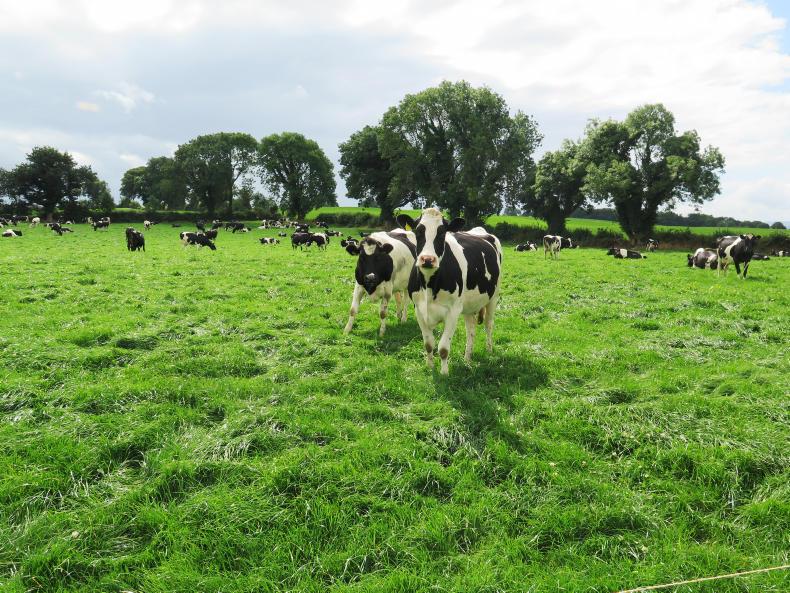
While the Kennedys have most of their expansion done the Coles in south Offaly are only really beginning their expansion story and have a different set of challenges.
Three generations of the Coles were present at the farm walk last week, octogenarian Cecil, his son Trevor and Trevor’s son Steven. Trevor and Steven are in a farm partnership.
The challenge for the Coles is to provide two incomes from the one farm. At the moment, they are milking 115 cows, they have 33 heifer calves, 25 in-calf heifers and 80 beef animals.
In their favour, the milking platform is large with 53ha around the yard and a 28ha block 4km up the road.
In 2007, the Coles were milking 71 cows and while cow numbers have increased to 115 cows today, there is plenty of potential for more cows if desired. Teagasc advisor Jim Moyles pointed out that the Coles are low-cost producers with a common cost from the 2016 profit monitor of 15.22c/l.
However, he said that drawings usually account for about 6c/l so in the Cole’s case where two incomes will be required this will be 12c/l.
Add in debt servicing costs and tax and total cash costs will be over 30c/l. The point was that while milking 115 cows might seem sufficient, where two incomes are required more cows will be needed to provide a sustainable income.
Last year, 390kg of milk solids was sold per cow with 603kg of meal fed. About 13t/ha of grass was grown (11.1t/ha utilised). About half the farm is low in phosphorus and nearly 80% is low in potash.
Reseeding
On top of this, reseeding rates are low with about 7% of the farm being reseeded this year.
There was a good discussion at the farm walk about whether the Coles should fix soil fertility before concentrating on reseeding.
Steven said that they are trying to improve soil fertility having spread a few bags/acre of 10:10:20 and 18:6:12 so far this year and plan to go with a bag/acre of muriate of potash later this year.
Arrabawn programme advisor Ruairi McDonnell said that growing more grass is a two pronged approach with both soil fertility and reseeding being targeted together.
The Cole’s goal is to milk 150 cows on the home farm which is a stocking rate on the milking block of almost 2.9cows/ha and to produce 450kg of milk solids per cow.
The plan is to grow more grass and reduce beef stock numbers on the outfarm to bring silage back from there.
There are a number of obstacles towards achieving these goals. While soil fertility and reseeding is being addressed, getting cows on the ground and having the facilities in place to cater for them is an issue.
Replacements
The Cole’s plan is to milk 130 cows next year and 150 cows by 2019. No cows have been purchased and all expansion has been from replacements born on the farm.
A few people asked why cows weren’t purchased to accelerate the expansion process but Steven said that fear of bringing in disease was the main reason they haven’t purchased stock.
There are 90 cubicles on the farm as well as slatted sheds for beef animals. The milking parlour is a 13-unit but cow flow is poor and Trevor and Steven do most of the milking together, bar the odd weekend off.
Investing
A new shed and slurry storage for 100 cows is being planned with planning permission submitted.
This is going to cost in the region of €1,500 per cow space, but with both Trevor and Steven in a registered farm partnership, the TAMS grant will be maximised and the total cost of the building work will fall within the investment ceiling.
Building a new milking parlour is also on the agenda, but not for a few more years.
Existing investments have been in land purchase with 60 acres purchased 14 years ago and six acres purchased recently.
The loan for the 60 acres is coming to an end soon so this will increase the amount of free cash available for repaying new debt or for extra drawings and so on.
The challenge for the Coles is to increase cow numbers without increasing the workload because they work hard enough as it is, doing most of the machinery work with no hired labour or relief milkers employed.
Key to achieving this is to operate a more simplified system with improved facilities and making more use of contractors and relief milkers.
Key points
Two large farms in the Arrabawn farm programme, one herd has expanded to 160 cows while the other herd is going to expand.Both farms are focussing on growing more grass and producing more milk solids per cow from similar levels of meal feeding.To do this they need to improve soil fertility and do more reseeding.Reducing the workload and running a more simplified system is a key goal for both farms. Read more
Greenfield Farm update: exceptional August growth and a €71,000 milk cheque
Dairy management notes: bad weather and lungworm
Arrabawn Co-op held two farm walks recently, one in Ballingarry in north Tipperary and the other 20km away near Birr in Co. Offaly.
There are plenty of similarities between the farms; both are large farms of 80 and 90 hectares each of right good land, both are father and son partnerships and both are milking black and white cows with a beef enterprise.
The Kennedys

Differences emerge in terms of stage of development. Pat and Eddie Kennedy in Tipperary are milking 162 cows this year on their 57ha milking block.
Thirty four hectares of outside land carries the 51 replacement heifers and calves and around 50 beef animals.
Cow numbers have increased from 112 cows in 2012 to 143 cows in 2016 and 162 cows today. Current stocking rate is 2.84 cows/ha on the milking block.
Next year, the Kennedys plan to increase cow numbers by 10 and milk 170 cows which would bring the stocking rate to 2.98cows/ha.
Growing enough grass
The issue for the Kennedys is to grow enough grass to feed the herd. Last year, it was estimated that 13.6t/ha of grass was grown.
Increasing the stocking rate to 3cows/ha means that the farm should be growing 15t/ha to have enough grass and silage for the cows with 500kg of meal being fed.
The overall stocking rate, presuming the beef animals remain, will be 2.68 livestock units/ha. Last year, 455kg of milk solids per cow was sold to Arrabawn with 585kg of meal fed.
Having increased cow numbers by downsizing the beef enterprise, any future increase in milk output from the Kennedy farm will have to come from either growing more grass to facilitate a higher stocking rate, or from increasing output per cow.
Just under 60% of the farm is soil index three and four for phosphorus with 80% at soil index three and four for potash.
Meal
Eddie reckons producing 500kg of milk solids per cow is a realistic target for the farm. Herd EBI is €102 with €23 for milk and €51 for fertility. They have no plans to increase the amount of meal fed. At the end of June they had 401kg of meal fed per cow.
Local Teagasc advisor Michael Hogan said there was much more to output per cow than just meal feeding levels.
He said that average age of the herd has a huge impact. Since 2012, about 30% of the herd has been first lactation.
This year it is 24% but the target for a herd not expanding is 18% with average age of the herd at 5.5 lactations.
To achieve this, fertility needs to be good. Empty rate in 2016 was 11% after 13 weeks and 81% of the herd calved in six weeks in 2017, so this is a challenge for the Kennedys.
Other factors which Michael Hogan said affect lactation yield are the peak and how long it lasts for and the rate of decline. Lactation length, days at grass and genetics are also important.
You need to be ticking the boxes in all of these areas in order to achieve high milk solids per cow.
"It’s much more than just the amount of meal being fed, it’s about the tactical use of feed. Over the years, Pat would regularly feed a kilo or two of meal in very wet weather or when grass is running tight.
"Looking ahead, increasing the age of the herd and achieving a compact calving will probably have the biggest impact.” Michael said.
Apart from cows and grass, an expansion of the 16-unit parlour to 20 units is on the cards as is an extra 60 cow cubicles and changes around the farmyard to improve cow flow and to make it more labour friendly and reduce the workload.
The Coles

While the Kennedys have most of their expansion done the Coles in south Offaly are only really beginning their expansion story and have a different set of challenges.
Three generations of the Coles were present at the farm walk last week, octogenarian Cecil, his son Trevor and Trevor’s son Steven. Trevor and Steven are in a farm partnership.
The challenge for the Coles is to provide two incomes from the one farm. At the moment, they are milking 115 cows, they have 33 heifer calves, 25 in-calf heifers and 80 beef animals.
In their favour, the milking platform is large with 53ha around the yard and a 28ha block 4km up the road.
In 2007, the Coles were milking 71 cows and while cow numbers have increased to 115 cows today, there is plenty of potential for more cows if desired. Teagasc advisor Jim Moyles pointed out that the Coles are low-cost producers with a common cost from the 2016 profit monitor of 15.22c/l.
However, he said that drawings usually account for about 6c/l so in the Cole’s case where two incomes will be required this will be 12c/l.
Add in debt servicing costs and tax and total cash costs will be over 30c/l. The point was that while milking 115 cows might seem sufficient, where two incomes are required more cows will be needed to provide a sustainable income.
Last year, 390kg of milk solids was sold per cow with 603kg of meal fed. About 13t/ha of grass was grown (11.1t/ha utilised). About half the farm is low in phosphorus and nearly 80% is low in potash.
Reseeding
On top of this, reseeding rates are low with about 7% of the farm being reseeded this year.
There was a good discussion at the farm walk about whether the Coles should fix soil fertility before concentrating on reseeding.
Steven said that they are trying to improve soil fertility having spread a few bags/acre of 10:10:20 and 18:6:12 so far this year and plan to go with a bag/acre of muriate of potash later this year.
Arrabawn programme advisor Ruairi McDonnell said that growing more grass is a two pronged approach with both soil fertility and reseeding being targeted together.
The Cole’s goal is to milk 150 cows on the home farm which is a stocking rate on the milking block of almost 2.9cows/ha and to produce 450kg of milk solids per cow.
The plan is to grow more grass and reduce beef stock numbers on the outfarm to bring silage back from there.
There are a number of obstacles towards achieving these goals. While soil fertility and reseeding is being addressed, getting cows on the ground and having the facilities in place to cater for them is an issue.
Replacements
The Cole’s plan is to milk 130 cows next year and 150 cows by 2019. No cows have been purchased and all expansion has been from replacements born on the farm.
A few people asked why cows weren’t purchased to accelerate the expansion process but Steven said that fear of bringing in disease was the main reason they haven’t purchased stock.
There are 90 cubicles on the farm as well as slatted sheds for beef animals. The milking parlour is a 13-unit but cow flow is poor and Trevor and Steven do most of the milking together, bar the odd weekend off.
Investing
A new shed and slurry storage for 100 cows is being planned with planning permission submitted.
This is going to cost in the region of €1,500 per cow space, but with both Trevor and Steven in a registered farm partnership, the TAMS grant will be maximised and the total cost of the building work will fall within the investment ceiling.
Building a new milking parlour is also on the agenda, but not for a few more years.
Existing investments have been in land purchase with 60 acres purchased 14 years ago and six acres purchased recently.
The loan for the 60 acres is coming to an end soon so this will increase the amount of free cash available for repaying new debt or for extra drawings and so on.
The challenge for the Coles is to increase cow numbers without increasing the workload because they work hard enough as it is, doing most of the machinery work with no hired labour or relief milkers employed.
Key to achieving this is to operate a more simplified system with improved facilities and making more use of contractors and relief milkers.
Key points
Two large farms in the Arrabawn farm programme, one herd has expanded to 160 cows while the other herd is going to expand.Both farms are focussing on growing more grass and producing more milk solids per cow from similar levels of meal feeding.To do this they need to improve soil fertility and do more reseeding.Reducing the workload and running a more simplified system is a key goal for both farms. Read more
Greenfield Farm update: exceptional August growth and a €71,000 milk cheque
Dairy management notes: bad weather and lungworm












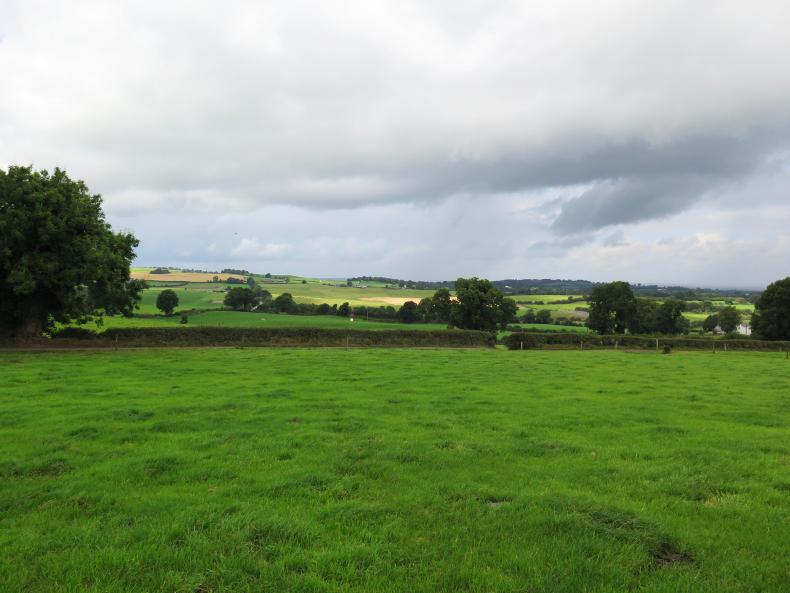
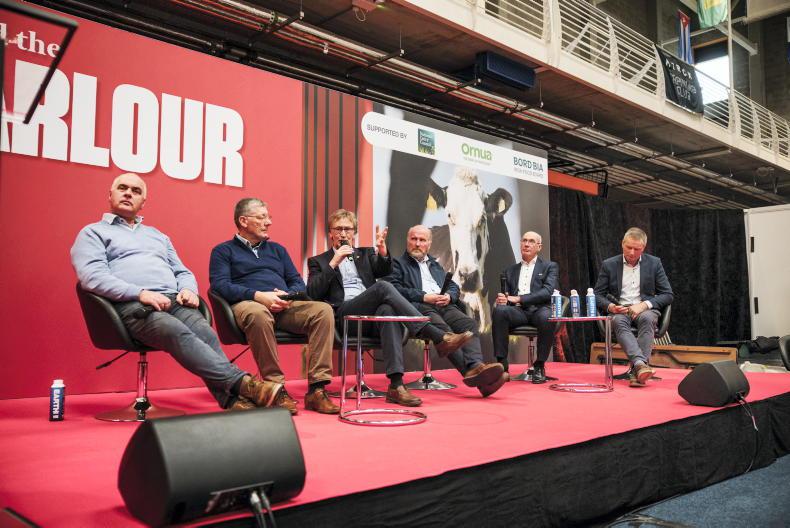


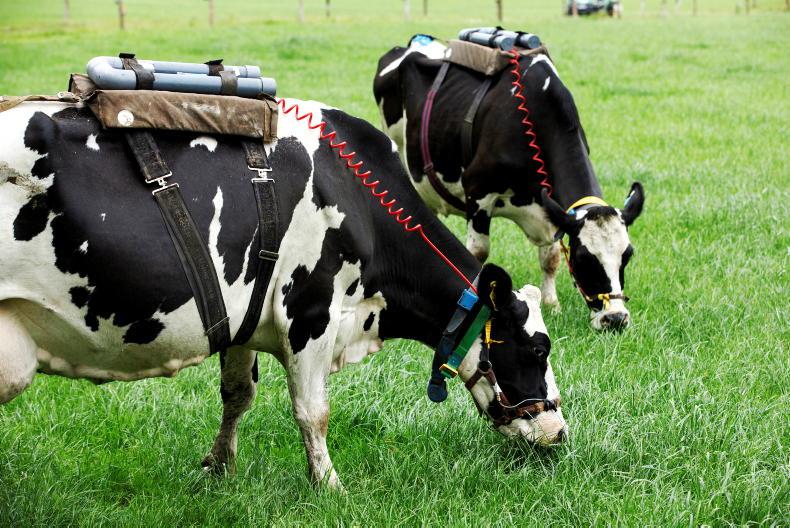
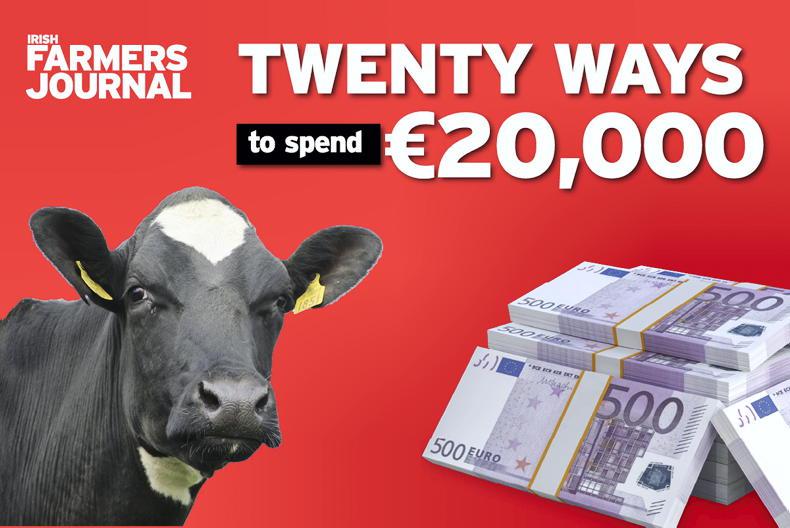
SHARING OPTIONS